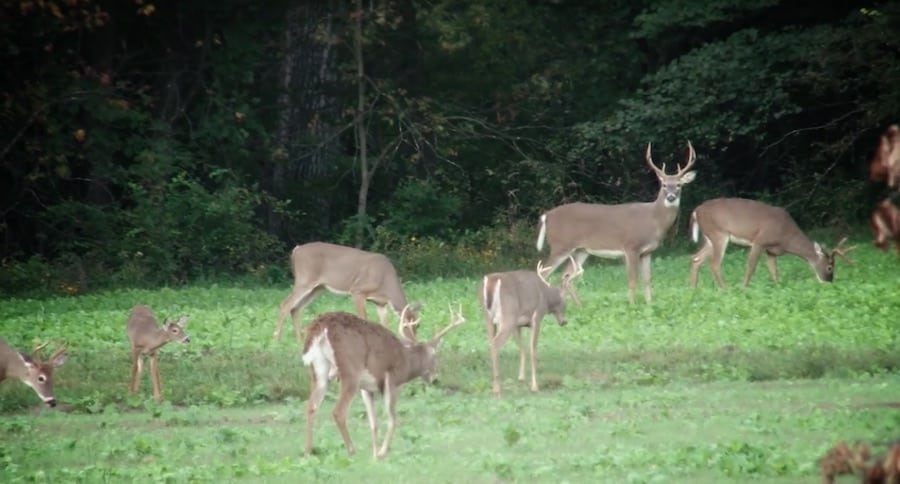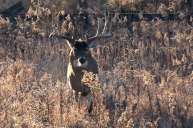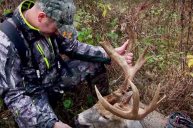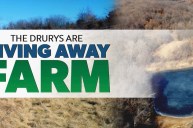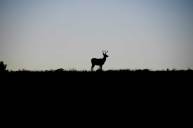Here's a detailed look at the revolutionary Drury Outdoors DeerCast app and the variables it takes into account to predict deer movement.
The Drury Outdoors DeerCast app has absolutely taken the hunting world by storm since hitting the app stores for both iOS and Android back in August. Jake Hofer did a pretty good general overview of the app a couple weeks ago. Today I'm going to take a deeper dive into the app, looking specifically at how it makes custom deer movement forecasts.
Anybody who's hunted a lot can tell you deer behavior is complicated and doesn't always make sense at first glance. The DOD Team Members, particularly Mark and Terry Drury, have a ton of experience hunting whitetail deer, and they've done a really good job of carefully analyzing whitetail movement patterns over the past few decades.
During that timeframe, they've noticed how various weather patterns and other environmental conditions seem to impact deer movement during daylight hours and how those same influencers vary over the course of deer season. Indeed, certain weather conditions may suppress deer movement at a particular time of year, but enhance it at a different time.
The Drury Outdoors DeerCast app uses a proprietary algorithm that aggregates what the guys at Drury Outdoors have learned about deer behavior during actual hunts over the course of their careers. The app looks at the local weather information and weights each influencer the DOD team has identified as important to deer movement according to each of the 13 phases of deer season in order to calculate a prediction on the relative amount of deer activity day by day and hour by hour.
Every hunter (even the Drurys) has a limited amount of time to spend afield. For that reason, it's extremely important to make the most out of those opportunities and prioritize hunting during the times deer are most likely to be moving during daylight hours. So, the app takes a look at 11 different influencers ranging from barometric pressure, temperature, cloud cover, wind speed and the phase of the moon. It uses these things to provide a recommendation on the best times to hunt a precise location.
Though the calculations are relatively complicated, the app provides an easy-to-understand summary of predicted deer movement. It ranges from "bad" to "poor" to "good" to "great" for daily or hourly analysis.
For instance, if you could only hunt one day out of Sept. 20 or 21, you'd probably be better off hunting on latter at this particular spot.
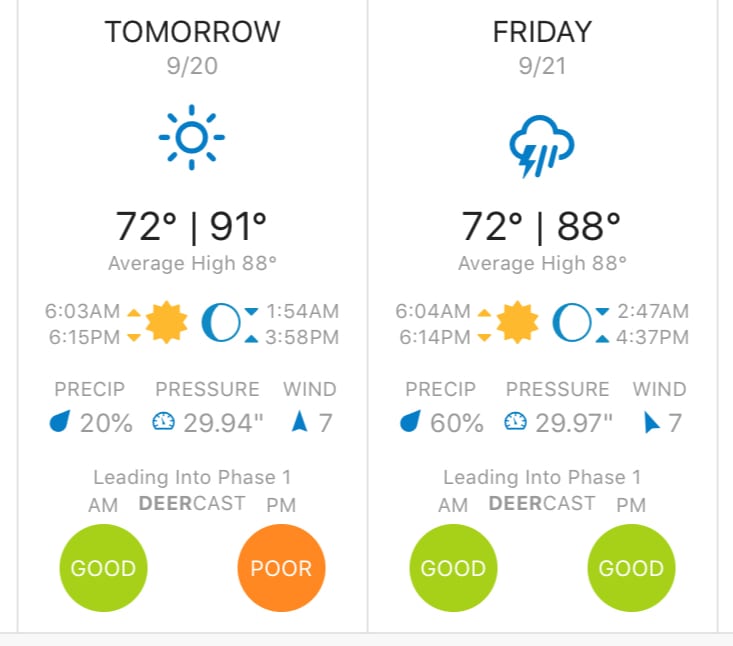
Diving into things a little deeper, you can see you should make sure you're in your stand from 9 a.m.-12 p.m. and 2-7 p.m. Sept. 21.

Additionally, this hunting app takes things a couple steps further than just providing recommendations for times to hunt. For instance, the app provides a bunch of information to help you understand how it works.
Right under your DeerCast, there are several videos featuring Terry and Mark Drury that recommend specific hunting tactics. These are the strategies best-suited for the distinct characteristics of that phase of whitetail season. There are also videos (presented in order of importance) explaining how various weather conditions impact deer activity during that phase of the season.
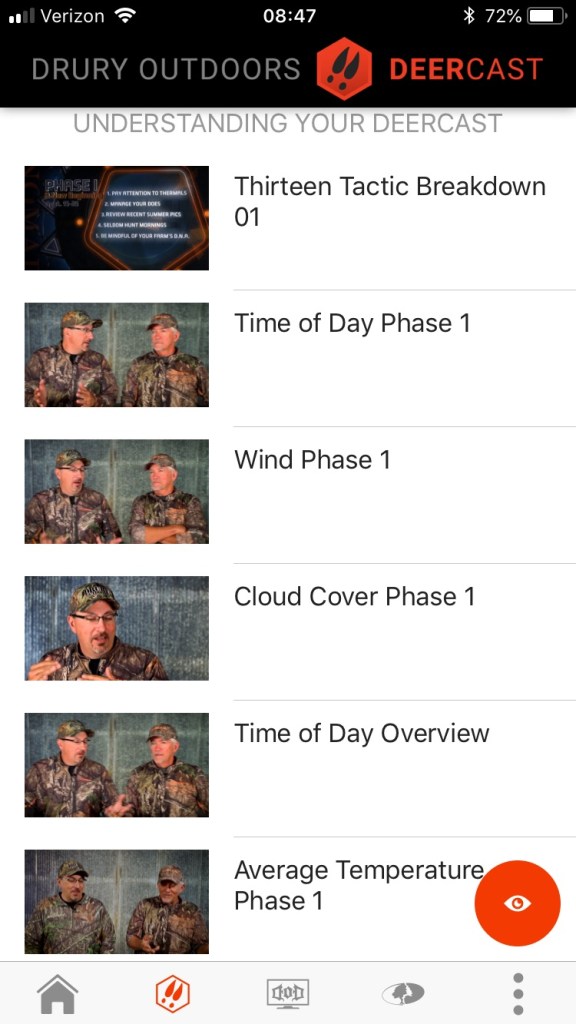
So, not only does the DeerCast app give you algorithm driven-deer movement forecasts, but it also helps you construct a strategy.
There are a couple of caveats to these forecasts, though.
First, DeerCast bases its predictions using a peak estrus date of Nov. 14. While that's a pretty accurate date for hunting in Iowa or Missouri, it'll throw off your forecast when hunting in other states like Texas and Florida. Fortunately, the app provides the option of manually setting a different peak estrus date if necessary.
Second, as good as the new app is, it won't make your hunting area any better. All it can do is provide a custom forecast that predicts when deer in your area should be moving. Other factors, like stand location and local hunting pressure, also have an impact on deer behavior the app can't necessarily predict.
So, while the app won't automatically make you a better hunter, savvy deer hunters can use it to make the most of their time afield and learn more about what factors influence deer movement patters.
Third, while they've tested DeerCast extensively, the DOD team is constantly tweaking and updating the app. You can help with this process by submitting a movement observation through the app by clicking on the red icon with the eye on it at the bottom right hand corner of the app screen.
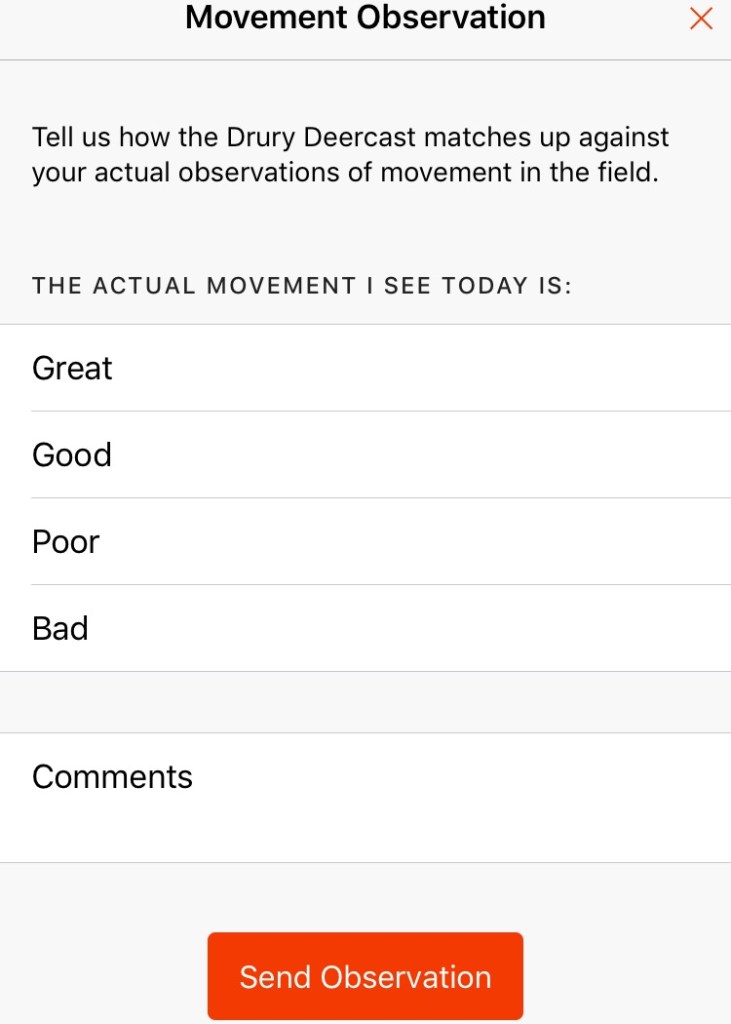
Drury Outdoors is offering free complete access to the app for this hunting season. It's currently available through their website, the Apple App Store, and Android's Google Play.
I've downloaded the app for my iPhone and I'm really excited about personally testing it out this fall. Never go deer hunting without it!
Like what you see here? You can read more great articles by John McAdams on The Big Game Hunting Blog. Follow him on Facebook, Twitter, YouTube, & Instagram.
NEXT: HERE ARE THE MOST FAMOUS SPORTSMEN FROM EACH OF THE 50 STATES
WATCH
https://rumble.com/embed/u7gve.v3tr93/
